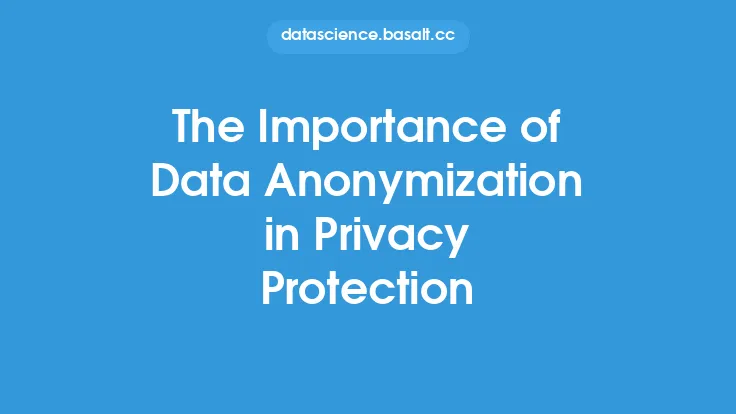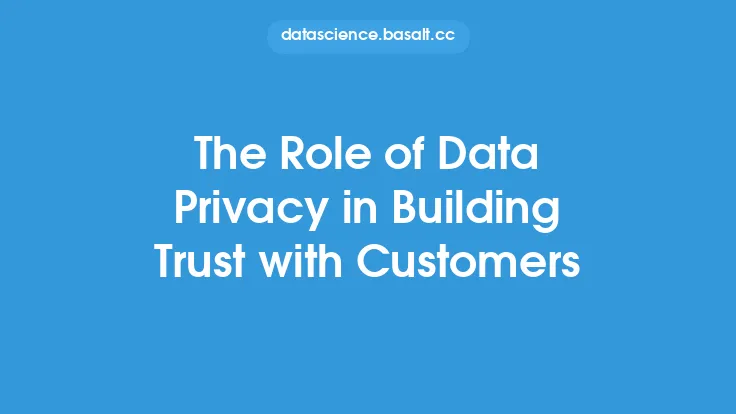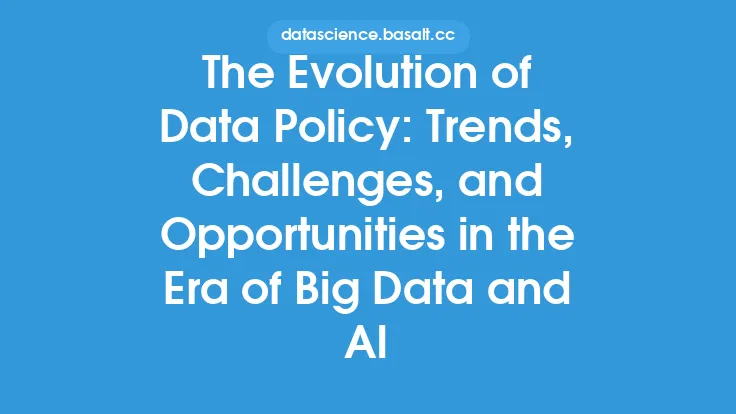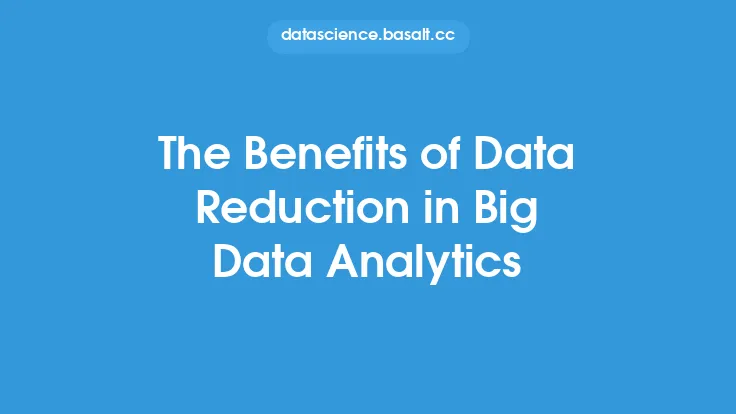Transparency is a fundamental principle in data privacy practices, enabling organizations to build trust with their customers, users, and stakeholders. It involves being open and honest about how personal data is collected, processed, stored, and shared. In today's digital age, transparency is crucial for ensuring that individuals' rights are respected and their data is protected. In this article, we will delve into the benefits of transparency in data privacy practices, exploring its significance, advantages, and best practices for implementation.
Introduction to Transparency in Data Privacy
Transparency in data privacy refers to the practice of providing clear, concise, and easily accessible information about an organization's data collection, use, and sharing practices. This includes being transparent about the types of data collected, the purposes for which it is used, and the parties with whom it is shared. Transparency is essential for building trust and demonstrating accountability, as it enables individuals to make informed decisions about their personal data. By being transparent, organizations can demonstrate their commitment to protecting personal data and respecting individuals' rights.
Benefits of Transparency in Data Privacy
The benefits of transparency in data privacy are numerous. Firstly, transparency helps to build trust with customers and users. When individuals are informed about how their data is being used, they are more likely to feel confident in sharing their personal information. This, in turn, can lead to increased customer loyalty and retention. Secondly, transparency can help to reduce the risk of non-compliance with data protection regulations. By being open and honest about their data practices, organizations can demonstrate their compliance with relevant laws and regulations, such as the General Data Protection Regulation (GDPR) and the California Consumer Privacy Act (CCPA). Thirdly, transparency can help to improve data quality and accuracy. By providing individuals with access to their personal data, organizations can ensure that the data is accurate and up-to-date, which can help to improve the overall quality of the data.
Technical Aspects of Transparency in Data Privacy
From a technical perspective, transparency in data privacy involves implementing various measures to ensure that personal data is handled in a transparent and accountable manner. This includes implementing data mapping and inventory practices, which involve creating detailed maps of an organization's data flows and inventorying the types of data collected. Additionally, organizations can implement data subject access request (DSAR) processes, which enable individuals to request access to their personal data. Furthermore, organizations can use data protection impact assessments (DPIAs) to identify and mitigate potential risks to personal data. DPIAs involve conducting thorough risk assessments to identify potential risks to personal data and implementing measures to mitigate those risks.
Best Practices for Implementing Transparency in Data Privacy
To implement transparency in data privacy practices, organizations should follow several best practices. Firstly, organizations should develop clear and concise privacy policies that are easily accessible to individuals. These policies should provide detailed information about an organization's data collection, use, and sharing practices. Secondly, organizations should provide individuals with access to their personal data, enabling them to view, update, and delete their data as needed. Thirdly, organizations should implement DSAR processes, enabling individuals to request access to their personal data. Finally, organizations should conduct regular DPIAs to identify and mitigate potential risks to personal data.
Challenges and Limitations of Transparency in Data Privacy
While transparency is a fundamental principle in data privacy practices, there are several challenges and limitations to its implementation. Firstly, transparency can be resource-intensive, requiring significant investments in time, money, and personnel. Secondly, transparency can be complex, particularly in organizations with complex data flows and multiple stakeholders. Thirdly, transparency can be limited by technological constraints, such as the use of legacy systems or outdated infrastructure. Finally, transparency can be limited by cultural and organizational barriers, such as a lack of awareness or understanding of data privacy principles.
Conclusion
In conclusion, transparency is a critical component of data privacy practices, enabling organizations to build trust with their customers, users, and stakeholders. By being open and honest about their data collection, use, and sharing practices, organizations can demonstrate their commitment to protecting personal data and respecting individuals' rights. While there are several challenges and limitations to implementing transparency in data privacy practices, the benefits are numerous, including building trust, reducing the risk of non-compliance, and improving data quality and accuracy. By following best practices and implementing technical measures, organizations can ensure that their data privacy practices are transparent, accountable, and respectful of individuals' rights.





